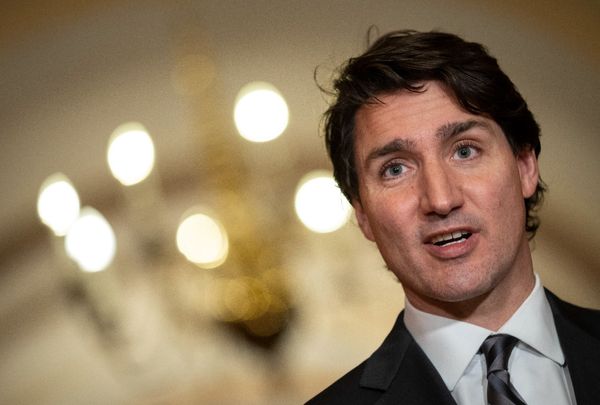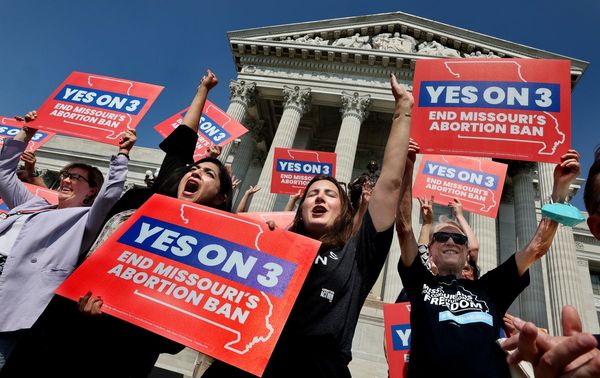A year into his presidency and with his central greenhouse gas-cutting legislation stalled in Congress, President Joe Biden finds his climate agenda moving in fits and starts as the U.S. is on track to miss the carbon reduction goals his administration set.
Biden said last week he may have to break off pieces of that bill, a roughly $2.2 trillion amalgam of climate and social programs, and pass them in “chunks,” a prospect that carries its own risks.
With opposition from Democrat Sen. Joe Manchin III of West Virginia, whose home state is synonymous with fossil fuel-centered energy, and fellow centrist Democrat Kyrsten Sinema of Arizona, prospects for passage are murky, legislatively hobbling a president who campaigned on curbing the emissions of the biggest carbon polluter of all nations in history.
Still, Biden has shepherded along some climate regulations at federal agencies, sought to imbue an all-of-government approach to the crisis and engaged foreign leaders diplomatically, though Earth continues to warm, spawning more powerful hurricanes, increasingly acidic oceans and more destructive wildfires.
His decision to rejoin the Paris climate agreement of 2015 and other steps to rejoin and lead international climate remediation efforts are “incredibly important,” said Lena Moffitt, campaigns director at Evergreen Action, a climate remediation advocacy group.
But, she said, the onus is on Congress to pass legislation to support Biden’s international climate pledges.
“So much of the credibility of American commitments depends on the ability of Congress” to pass legislation, she said in a phone interview.
To back up a pledge Biden made at the U.N. in September to help developing nations mitigate and adapt to climate change and its repercussions, for example, he will have to rely on congressional funding.
Getting hotter
All the while the climate threat becomes more pronounced. Earth experienced its sixth-hottest year on record in 2021. Climate scientists warn Antarctica’s Thwaites Glacier, the size of Florida, could soon break into the ocean and trigger a 2-foot sea level rise. Emissions in the U.S. grew 6.2 percent last year compared to 2020. The Mauna Loa observatory in Hawaii, a National Oceanic and Atmospheric Administration facility, recorded record-high carbon dioxide readings in May. More than half of the country entered 2022 in either drought or “abnormally” dry conditions, federal data show.
“It’s certainly warmer now than any time in the past 2,000 years,” Russ Vose, a NOAA scientist, said this month. “All this is driven by increasing concentrations of heat-trapping gases, like carbon dioxide.”
In his first address to Congress, Biden touted an early iteration of his infrastructure bill as a tool to combat climate change, saying, “When I think about climate change, I think jobs.”
Though Congress passed and the president signed into law an infrastructure bill that provides about $7.5 billion for electric vehicle projects and $17 billion for a loan program for “advanced” vehicle manufacturing through the Energy Department, that sum was a fraction of what the White House wanted.
Biden took many climate steps unilaterally. On his first day in office, he began the process to rejoin the Paris climate agreement, fulfilling a campaign promise. He also revoked a permit for the Keystone XL pipeline, irking Republicans, who have needled the president over that decision since.
After rejoining the Paris accord, Biden pledged the U.S., historically the most prolific greenhouse gas emitter on the planet and currently the second-largest behind China, would slash its emissions 50 percent to 52 percent from 2005 levels by 2030 and zero them out by 2050.
“That’s the most important climate commitment that he made,” Moffitt said.
When he ran for the White House, Biden pledged to phase out fossil fuel activity on federal lands and revoke a federal permit needed to complete the now-mothballed Keystone XL pipeline. He also said on the campaign trail that he would prod the Department of Justice to “strategically support” climate lawsuits against large fossil fuel companies, like Exxon Mobil, Chevron, BP and Shell, though the DOJ has not taken public action to that end.
Evergreen assembled a list of 46 climate-related pledges made by Biden while he was a candidate in 2020. The administration has completed 10 of those commitments and made “great progress” on five more, while the others remain outstanding, according to Evergreen.
In four years, the Trump administration rolled back about 80 environmental or energy regulations, according to a tally the Environmental & Energy Law Program at Harvard Law School maintains.
John Larsen, a partner at Rhodium Group, an independent policy research firm, said the Biden administration began last year with a depleted federal workforce — a hurdle to reinstating climate policies.
‘Bad hand’
“They got handed a really bad hand in the sense that potentially the most destructive term in presidential history for climate came right before,” Larsen said. He gave the administration high marks for its work in reestablishing climate rules and regulations in the wake of the Trump term, “which I think in normal times would be a substantial accomplishment.”
But because climate change is an all-encompassing threat that requires significant federal intervention to address, reversing Trump-era decisions isn’t sufficient, he said: “Just undoing the bad choices of the past administration is not enough.”
Since Biden was sworn in, congressional Republicans have criticized his climate agenda and sought to tie it to price spikes in gasoline and heating.
“Energy prices are soaring to seven-year highs and American families are suffering,” Rep. Fred Upton, R-Mich., said at an Energy and Commerce subcommittee hearing on Jan. 19. “If it is not already clear to everyone, we rely on fossil fuels.”
Rep. Cathy McMorris Rodgers, R-Wash., said at the same hearing that Jan. 20 would mark “one year of President Joe Biden’s energy crises.”
Biden also faces a threat from the Supreme Court, which agreed in November to hear a legal challenge from a group of Republican attorneys general and coal companies that could undercut the EPA’s power to regulate carbon emissions under the Clean Air Act, a bedrock federal law written in the 1970s.
A ruling against the EPA could hamstring the Biden administration as it tries to regulate greenhouse gases from the power sector, the second-largest source of emissions in the country behind transportation.
Even the threat of a Supreme Court ruling overturning the EPA’s prerogative to regulate carbon emissions could crimp what the agency does on climate this year, Sean Hecht, an environmental law professor at UCLA, said in an interview. “It’s going to be much harder for EPA to complete a new rulemaking in this unstable environment with the Supreme Court pending,” he said.
The agency is expected to release a proposal this year to lower emissions from the power sector, after the Trump administration rescinded an Obama-era plan to do so.
As the Biden administration enters its second year, the most promising avenue to lower emissions could be the Kigali amendment, an international treaty pending in the Senate Foreign Relations Committee.
Chairman Sen. Bob Menendez, D-N.J., has said he thinks it will get “strong bipartisan support” in the committee and full chamber. Bringing the treaty into force worldwide would phase out the use of potent chemicals called hydrofluorocarbons and could avert as much as 0.5 degrees Celsius in warming by 2100, experts say, potentially the difference between manageable and severely debilitating climate change.
A time-buying treaty aside, perhaps the biggest climate impression of Biden’s first year is that the president focused on it during his transition to office and early months in office.
“No president has ever really done that before,” Larsen said. “He didn’t have to make it a priority but he did.”
The post Biden didn’t get all he wanted on climate, but it’s a new year appeared first on Roll Call.







